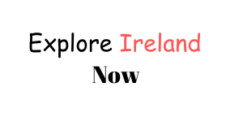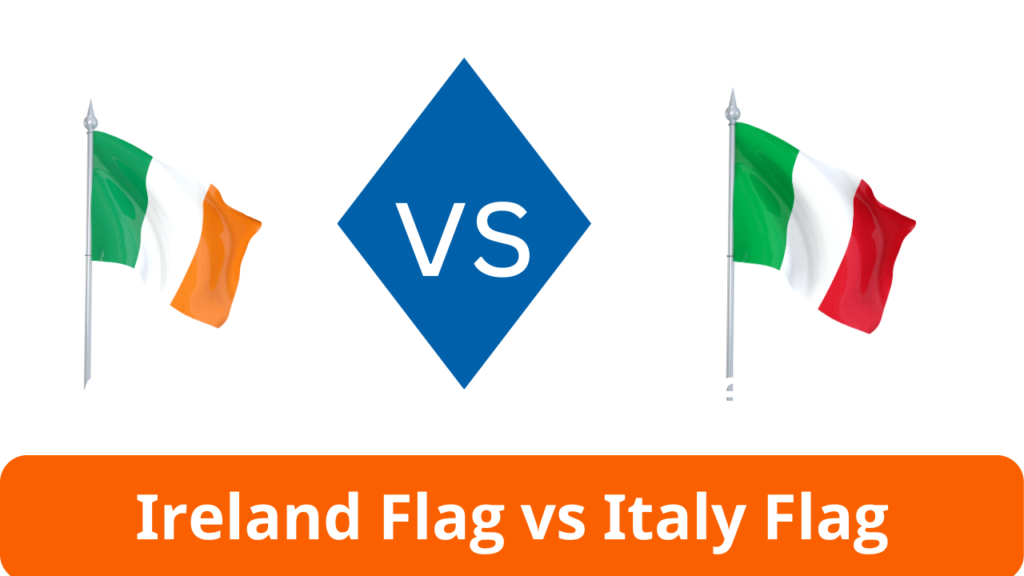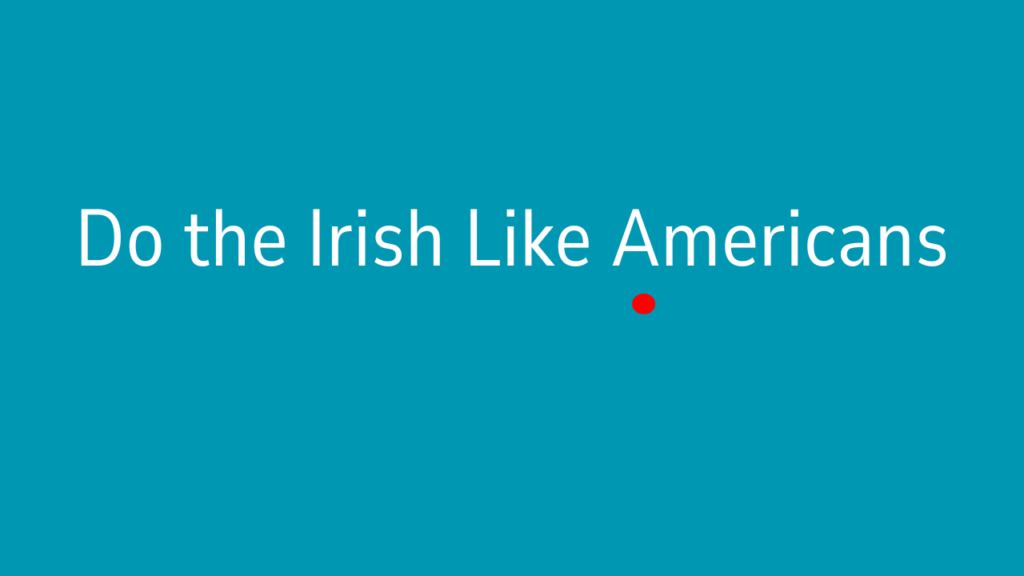Flags are powerful symbols of identity and pride for nations. While the flags of Ireland and Italy may look similar at first glance, they have distinct differences in their design, meaning, and history. In this article, we’ll explore these two flags in depth, covering their origins, symbolism, and differences. By the end, you’ll easily recognize each flag and understand the stories they represent.
1. Overview of the Ireland Flag
The national flag of Ireland, also known as the Irish tricolor, consists of three vertical stripes:
- Green (on the hoist side)
- White (in the middle)
- Orange (on the fly side)
Key Facts:
- Adopted: 1919 (officially in 1937)
- Proportions: 1:2
- Symbolism:
- Green: Represents Irish Catholics and the republican cause.
- Orange: Represents Irish Protestants.
- White: Symbolizes peace and unity between the two groups.
Fun Fact:
The Irish flag was inspired by the French tricolor and was introduced by Irish nationalists in the mid-19th century.
2. Overview of the Italy Flag
The national flag of Italy, also known as the Italian tricolor, also features three vertical stripes:
- Green (on the hoist side)
- White (in the middle)
- Red (on the fly side)
Key Facts:
- Adopted: 1946 (current version)
- Proportions: 2:3
- Symbolism:
- Green: Represents the country’s plains and hills.
- White: Symbolizes the snow-capped Alps.
- Red: Stands for the blood shed during Italy’s independence wars.
Fun Fact:
The Italian flag was inspired by the French flag during Napoleon’s era, when he established Italian republics in the late 18th century.
3. Visual Comparison
At first glance, both flags might look alike due to their vertical stripes. However, closer inspection reveals clear differences.
| Feature | Ireland Flag | Italy Flag |
|---|---|---|
| Colors | Green, White, Orange | Green, White, Red |
| Order of Colors | Green (hoist), White, Orange | Green (hoist), White, Red |
| Proportions | 1:2 | 2:3 |
| Symbolism | Unity between Catholics and Protestants | Natural beauty and historical struggle |
| Adopted | 1919 (officially 1937) | 1946 |
4. Key Differences Between the Flags
Here’s a closer look at the differences between Ireland’s and Italy’s flags:
4.1 Color Differences
- Ireland: Green, white, and orange.
- Italy: Green, white, and red.
While green and white are common, the third stripe differs significantly. Ireland uses orange, symbolizing Protestant communities, while Italy uses red, representing sacrifice and independence.
4.2 Proportions
- The Ireland flag has a 1:2 ratio, making it longer.
- The Italy flag uses a 2:3 ratio, making it shorter and wider.
4.3 Symbolism
- Ireland’s flag represents peace and unity between religious groups.
- Italy’s flag is tied to its natural beauty and the sacrifices of its independence movement.
4.4 Historical Background
- Ireland’s flag has roots in the 19th century but became prominent during the Irish independence movement.
- Italy’s flag emerged in the late 18th century and evolved with Napoleon’s influence.
5. Similarities Between the Flags
Although there are clear differences, there are also similarities:
- Both have vertical tricolor designs.
- The green stripe on both flags is on the hoist side.
- Both flags symbolize important national values.
6. History of the Ireland Flag
- Early Flags: Before the tricolor, various flags, such as St. Patrick’s Saltire, represented Ireland.
- Inspiration: The Irish tricolor was inspired by the French flag and introduced in 1848 by Thomas Francis Meagher.
- Adoption: It became the official flag of Ireland after the country gained independence in 1921.
Key Events:
- 1848: First introduced during a nationalist uprising.
- 1919: Used by the Irish Republic during the War of Independence.
- 1937: Officially adopted by the Irish Constitution.
7. History of the Italy Flag
- Early Flags: Italy’s flags evolved through different states and kingdoms, such as the flag of the Kingdom of Sardinia.
- Napoleon’s Influence: The tricolor was introduced during Napoleon’s campaigns in Italy (1797).
- Modern Flag: The Italian Republic adopted the current flag in 1946 after World War II.
Key Events:
- 1797: First tricolor used by the Cispadane Republic.
- 1848: Adopted by the Kingdom of Sardinia.
- 1946: Official flag of the Italian Republic.
8. Interesting Facts About Each Flag
Ireland Flag
- Often mistaken for the Ivory Coast flag, which uses the same colors but reversed.
- The orange stripe honors William of Orange, a Protestant king.
Italy Flag
- Its green color may also symbolize hope.
- Inspired many flags worldwide, especially in Europe and Latin America.
9. How to Distinguish Between the Two Flags
Here are some tips to differentiate the two:
- Look for the third stripe:
- Orange = Ireland.
- Red = Italy.
- Observe the proportions:
- Longer flag = Ireland.
- Wider flag = Italy.
- Remember the symbolism:
- Peace between religions = Ireland.
- Natural beauty and history = Italy.
10. FAQs About Ireland and Italy Flags
Q1: Why do the flags look so similar?
Both flags were inspired by the French tricolor and share a vertical stripe design.
Q2: Can the Ireland and Italy flags be confused?
Yes, at a distance, the flags might look similar. However, the color order and proportions make them distinct.
Q3: Are the flags ever used together?
The flags are often seen together during international events like the Olympics or cultural festivals celebrating Irish and Italian heritage.
Conclusion
The flags of Ireland and Italy are unique symbols of their respective countries, despite their visual similarities. Ireland’s flag represents unity between different religious groups, while Italy’s flag celebrates natural beauty and independence. By understanding their histories, designs, and symbolism, we can appreciate the deep meaning behind these iconic banners.
Next time you see these flags, you’ll know how to tell them apart and the stories they carry.

Hi, I’m Tanvir, the founder and author of Explore Ireland Now. With a deep love for Ireland and its rich culture, history, and landscapes, I created this site to share everything that makes this beautiful country worth exploring. Whether you’re a local looking for hidden gems or a traveler planning your next adventure, I provide insightful guides, tips, and recommendations to help you experience Ireland to the fullest.
From stunning landscapes to vibrant cities and quaint villages, Ireland is full of wonders waiting to be discovered. Through my personal experiences and research, I aim to bring you the most up-to-date information and inspiration for your journey.
Thank you for visiting Explore Ireland Now—I hope my content helps you uncover all that this incredible country has to offer! If you have any questions or need travel advice, feel free to reach out.



